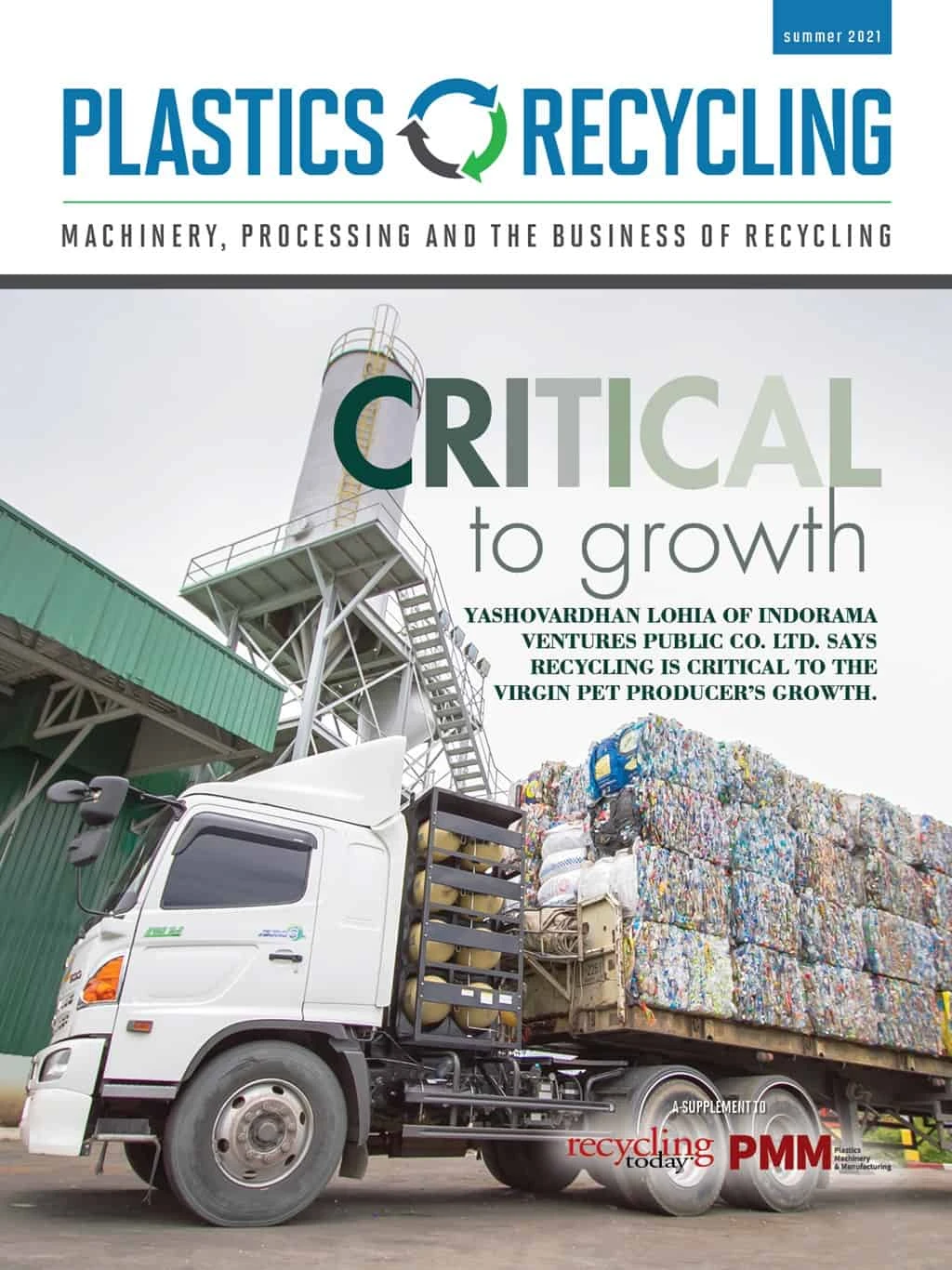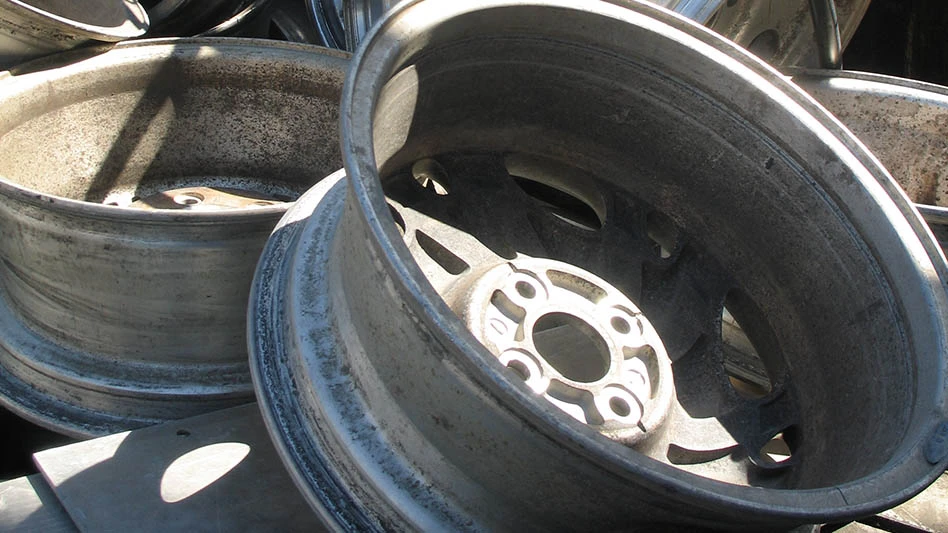
At Canon Virginia Inc. (CVI), Newport News, Virginia, zero is a number that takes on big significance. As in zero waste, zero landfill.

The company’s devotion to sustainability is embodied by its efforts to recover value from the high-impact polystyrene (HIPS) that makes up its toner cartridges. From the design of a new printer, copier or toner cartridge through its manufacture, much of CVI’s focus is on the product’s end of life, as the company strives to reuse, refurbish or recycle everything that passes through its facilities.
“We’ve always wanted to be able to look at our processes and make sure that we’re doing the responsible thing, the sustainable thing,” says Rhonda Bunn, senior director of human resources and corporate communications for CVI. “So, we recycle cardboard, we recycle the cafeteria waste. … Any and everything that we can do as a corporation, we’re trying to do.”
Much of the recycling effort takes place at Canon Environmental Technologies Inc. (CETI) in Gloucester, Virginia, which handles an array of products. Every day, 14 semitractor-trailer trucks visit the facility just to deliver cartridges that have been returned by businesses, consumers and retail outlets, such as OfficeMax.
CVI Vice President of Engineering Tom Keegan says that since it opened in 1996, CETI has recycled “mountains” of material in its efforts to help CVI be more sustainable.
Keegan and his colleagues highlight the cartridges as an example of CVI’s sustainability success.
“The parts that can be salvaged from the toner cartridges are salvaged and cleaned. And then they are sent back to CVI to put into other cartridges,” says Mark Beagle, senior manager for business planning at CVI. “The plastic casing … is ground and goes through a purification process through the equipment that we have at CETI, and then that material’s repelletized, and then the pellets are sent back to CVI and then that plastic is used in new cartridge production.”
A sustainable mindset
Beagle says CETI reuses everything it can. It starts when the semis pull up.
Multiple vision systems and vision-guided robots separate the cartridges and other products according to product type, size and the sorts of boxes in which they are shipped. The cartridges are removed from the cardboard protecting them, and CETI shreds the boxes, sending the material to a cardboard recycler.
Then, the cartridges are sorted by their model numbers, which identify the flame retardants that were used in manufacturing them.
“We’re looking at those cartridges, identifying what model it is by either looking at the actual label on the cartridge or looking at the overall profile of the cartridge, and, again, within split seconds, making the decision on what type of cartridge that is,” Keegan says. “And then we have automatic diverters that divert those cartridges to the streams that we’re going to process in their pure form,” he explains.
Cartridges with high-value recyclable components automatically are disassembled. A proprietary system then crushes all the cartridges, which could explode or catch fire if the aerosolized toner they release is not handled properly.
Once the cartridges have been crushed, CETI removes the toner and recovers ferrous and nonferrous metals, which are sent to a third-party recycler.
“And so, the toner goes in one direction, and we actually recycle the toner, as well. We’re actually repelletizing toner and selling that to some customers,” Keegan says.
CVI produces some kinds of cartridges that contain 100-percent-recycled HIPS, along with a small portion of other plastics.
According to the company, more cartridges that use one type of flame retardant are returned than are needed for new cartridge production, contributing to a surplus of recycled HIPS that CVI then sells to other companies. Meanwhile, the company receives fewer cartridges that are made with another type of flame retardant, forcing it to use some virgin HIPS when it makes new versions of those types of cartridges. Eventually, CVI anticipates, both types of cartridges will be returned in volumes sufficient to support production using only 100- percent-recycled HIPS.
“The toner that is left in the cartridges, that is collected and a material, a polymer, is added to the toner, and that is repelletized,” Beagle explains. “And we sell repelletized toner to companies that use it in the manufacturing of their products, as it can be used as a colorant. It can be used as a filler material.”
For the components and recycled HIPS from the cartridges, CETI is just one stop on the circle of life. Many of them are reincarnated into new cartridges, just about 20 miles away, at Canon’s facility for new cartridge manufacturing.
Expanding its circular approach
As with all CVI’s products, planning for the end begins at the product’s start.
“A lot of people talk about design for manufacturing; we talk about design for recycling. What we do is we meet our counterparts at Canon Inc. in Japan when they’re getting ready to produce a new product, and we talk about how to make that product easier to recycle,” Keegan says.

Bunn says employees’ commitment to the cause has kept recycling at the fore of Canon’s mission.
“For example, [expanded polystyrene], I think our purchasing folks and some of our manufacturing folks on the floor got together and said, ‘We’ve got to be able to recycle this. And how do we do it?’” she says. “So, they got involved in this project that was really kind of employee-driven. And they found a piece of equipment, it’s not very big, and it’s not very attractive, but the employees now take the [expanded polystyrene], they melt it down and then Purchasing was able to sell that.”
According to the company, CETI sells the densified expanded polystyrene material to a recycling partner that further processes it.
CVI also is exploring processes beyond mechanical recycling, including chemical recycling and depolymerization, Keegan says, in an attempt to add value to the materials that are being recovered.
“Instead of just taking plastic and leaving it in that plastic form, how do we increase the value?” he says. “Some of those things are additional things that we’re working at, whether it be gold, whether it be recycling toner into a different end product or even some of our plastic into a different end product, we’re really looking at the overall value-added part of the equation.”
A CVI employee for “30 wonderful years,” Keegan says he finds gratification knowing landfill mounds are shorter because of his and CVI’s efforts. Over the course of his career, his company has recycled more than 500 million pounds of cartridges, he says.
Even in his personal life, Keegan says he looks at trash differently now.
“Twenty-five years ago, we didn’t have the environmental movement that we have now, and so I feel like we were sort of on the cutting edge of taking responsibility for the products that we produce and making sure that, from cradle to grave, they were dealt with responsibly,” he says.

Explore the Summer 2021 Plastics Recycling Issue
Check out more from this issue and find your next story to read.
Latest from Recycling Today
- RMDAS April figures show recycled steel price setback
- Steer World offers PEX plastic recycling machine
- New recycling grant program launches in Massachusetts
- Tire Recycling Foundation names executive director
- Dock 7 named 2025 Exporter of the Year at New Jersey International Trade Awards
- Waste Connections reports ‘better than expected’ Q1 results
- Commentary: How EPR is transforming the packaging industry
- Acerinox names new North American Stainless CEO





